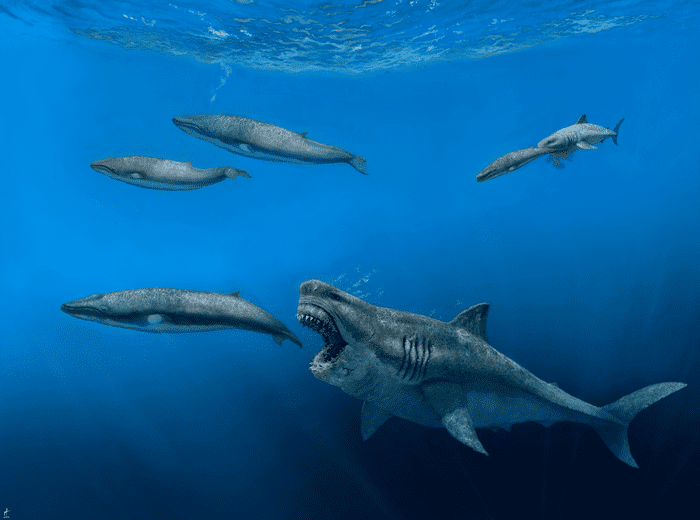The megalodon, a giant shark that first emerged around 23 million years ago and went extinct some 2.6 million years ago, is one of the fiercest predators to have ever lived, either on land or in the sea. While its maximum size still remains uncertain, a group from the University of Zurich have found that the creatures could have eaten killer whales…whole. Easily.
Using a 3D model, the researchers recreated a megadolon 16 meters long (52.5 feet) which weighed over 61 tons and could swim at top speeds of around 1.4 meters (4.6 feet) per second. This beast would have required over 98,000 kilo calories every day (for comparison, humans consume about 2,000 calories per day) and had a stomach volume of almost 10,000 liters. These results suggest that the megalodon could travel long distances and was capable of eating whole prey of up to eight meters (26 feet) long, about the size of a modern killer whale, currently the ocean’s apex predator.
“These results suggest that this giant shark was a trans-oceanic super-apex predator,” says Catalina Pimiento, Professor at the University of Zurich and senior author of the study. In fact, the megalodon was so impactful in the oceans that its extinction reshaped ecosystems throughout the oceans. “The extinction of this iconic giant shark likely impacted global nutrient transport and released large cetaceans from a strong predatory pressure.”
The researchers started their megalodon model from a spinal column. But before reconstructing the entire column, the team measured and scanned each and every vertebra. The column was then attached to a 3D scan of an American megalodon’s mouth. Using a 3D scan of a South African great white shark’s body, they finished the model by adding “flesh” around the skeleton.
Even though it is thought to have been one of the largest and most powerful predators that ever lived, the megalodon is only known from a few scattered remains, and its appearance as well as its maximum size are relatively unknown. There is a lack of consensus among scientists as to whether it would have resembled a stockier version of the great white shark, the whale shark, the basking shark or the sand tiger shark. The most recent estimate, which also has the smallest margin of error, suggests that the maximum length could be as much as 20 meters (66 feet), but the average lengths are estimated to be 10.5 meters (34 feet).
Megalodon would have been able to meet its high energy needs by eating the high-calorie blubber of whales — as highlighted by fossils that have shown bite marks in whale blubber. An optimal foraging model of possible megalodon prey found that eating a single eight-meter-long whale might have given the shark enough energy to swim thousands of miles across oceans for two months without eating again. Catalina Pimiento, a professor at the University of Zurich and the study’s lead author, published in Science Advances, says that the results show that this giant shark was a super-apex predator that lived in both oceans.
“The extinction of this famous giant shark probably changed how nutrients moved around the world and freed large cetaceans from a lot of pressure from predators.”
Now that the model is completed, it can be used as a starting point for future reconstructions and research. The new biological conclusions drawn from this study are a big step forward in our understanding of this one-of-a-kind super predator. They also help us learn more about the role that megafaunal species play in marine ecosystems and the big effects of their extinction.



